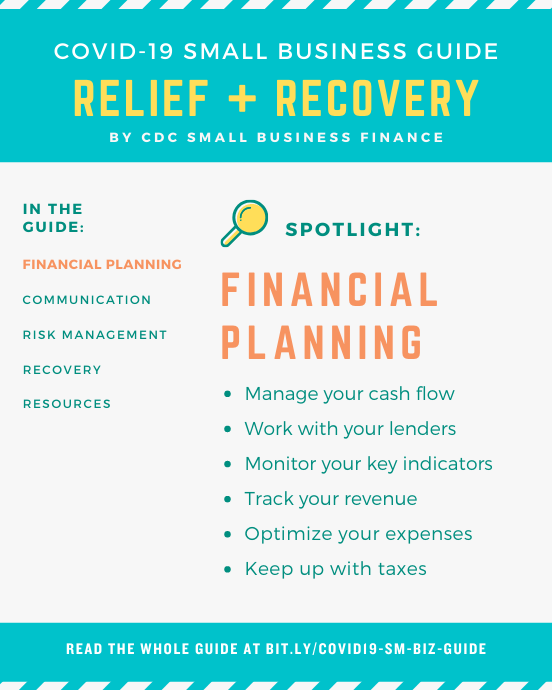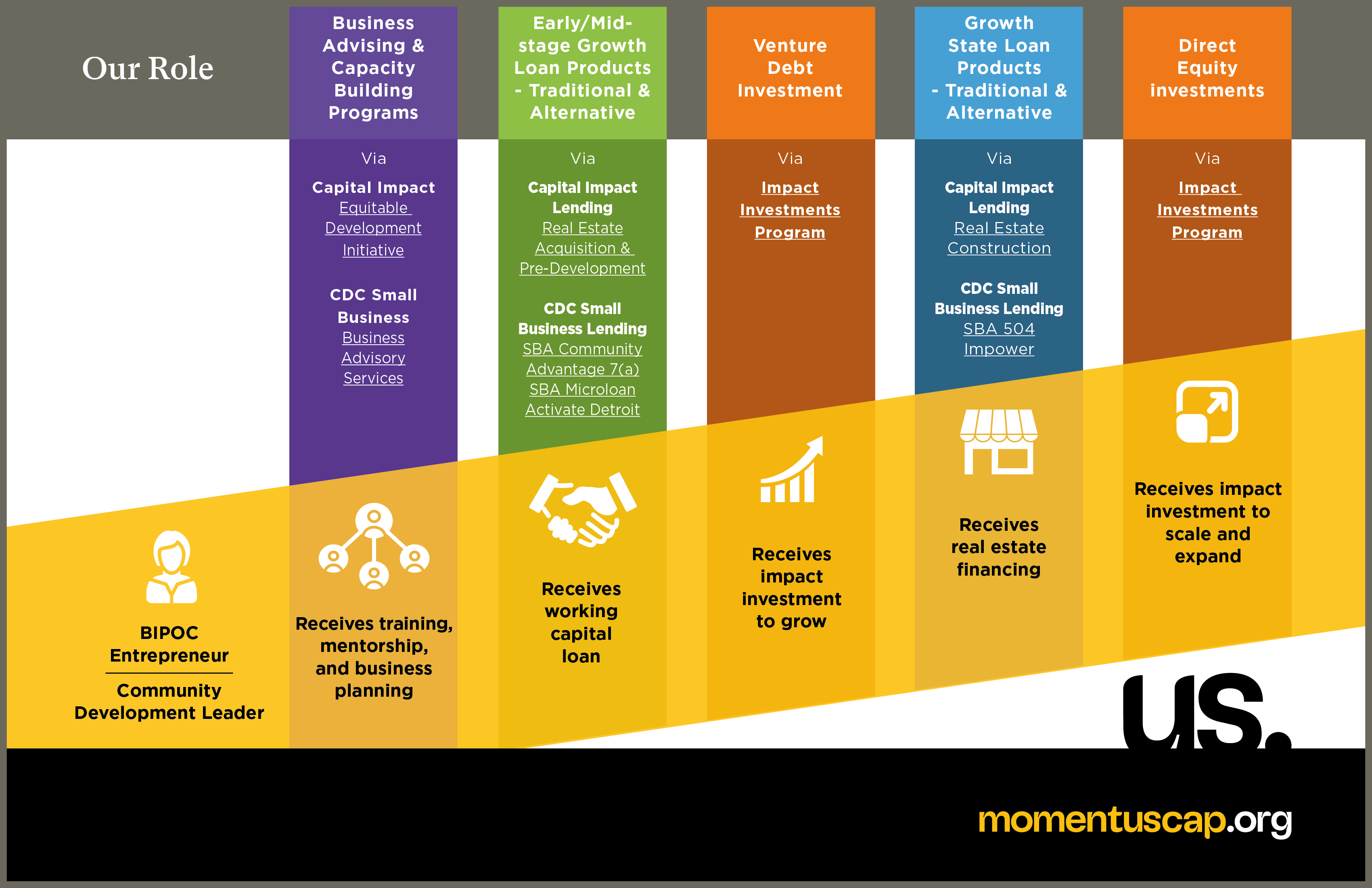
Small Business Guide to Relief and Recovery: Financial Planning
We are focused on offering tools to help small business owners with the ongoing impacts of the coronavirus. The path forward may seem overwhelming, but CDC Small Business Finance will continuously update our guide to help small business owners meet the challenge.
The categories in our “Guide to Relief and Recovery” include:
- Financial planning
- Communication
- Risk management, including how to avoid COVID-19 loan scams.
- Recovery
- Resources, including SBA emergency grant and loan programs and webinars.
Today, we focus on financial planning, with tips on how to manage cash flow, work with lenders, keep track of revenues and expenses and more.
This is key, said Chuck Sinks, who leads CDCSBF’s business advising team. “Financial planning now needs attention on a daily and weekly basis,” he explained.
“To stay ahead and be able to make smart pivots, prepare cash forecasts for each of the coming weeks for the next quarter. Revisit the forecasts frequently based on changes in your industry.”
Check back often as Chuck and the advising team continue to add updates.
And remember, please bookmark this guide.
FINANCIAL PLANNING
MANAGE YOUR CASH FLOW
- Budget for the upcoming 30 days or 60 days.
- Reduce overhead, all discretionary and non-essential expenses. Modify business hours as needed.
- Negotiate with the landlord for concessions (reduction, slower payment, late fee waiver, etc).
- Franchisees should contact franchisor rep and request “Royalty Holiday” in writing.
- Keep cash disbursements to a minimum.
- Cut back on staffing/payroll if necessary.
WORK WITH YOUR LENDERS
- Complete a cash-flow analysis to determine any funding gaps.
- Communicate with your lenders – contact CDC and/or your bank if you are unable to meet your loan commitments.
- Carefully review your loan documents with your lender and discuss any potential challenges.
MONITOR YOUR KEY INDICATORS
- Assess quick/current ratios, customer orders, equipment utilization, receivables, operating expenses, cash buffer days and working capital.
- Prepare 13- and 26-week cash forecasts and stress test the underlying assumptions.
- Assess eligibility for government and private sector relief.
TRACK REVENUE
- Find alternative sources of revenue.
- Re-allocate resources to areas of growth, online and beyond.
OPTIMIZE EXPENSES
-
- Audit spending and eliminate unnecessary items.
- Determine what segments are working and which are not.
- Convert fixed to variable costs where possible.
- Revisit capital expenditure plans.
- Reduce / curtail lower ROI efforts.
- Ensure investment in critical innovation for the future.
- Flag non-recurring expenses.
TAX UPDATES
- IRS
- News Releases – federal tax deadline extended to July 15.
- The Franchise Tax Board – California: Tax relief for California taxpayers affected by the COVID-19 pandemic.
- Arizona Department of Revenue Learn about the extension
STAY CONNECTED AND UP TO DATE
We closely monitor best practices and resources to help you manage your business. Here’s how to get the latest details:
- Subscribe to our blog.
- Follow us: Facebook, LinkedIn, Twitter, YouTube and Instagram.
- Bookmark our “COVID-19 Small Business Guide to Relief & Recovery” for updated resource links and tips.
- Check out our #WebinarWednesday page for the upcoming week’s roundup of content for small businesses.
- Subscribe to our weekly e-newsletter, Source. The latest news and tips from trusted outlets like Small Biz Daily, Entrepreneur, Inc. and more.
See our COVID-19 Small Business Guide to Relief and Recovery
In case you missed it:
- Our commitment to small business owners in need
- Small business owners step up to support COVID-19 relief causes
CDC Small Business Finance is a trusted small business lender, award-winning nonprofit and advocate for entrepreneurs. Over more than four decades, we have provided $18 billion in funding to over 11,000 borrowers … and counting. Unlike a traditional lender, we have the flexibility to offer affordable loans to underserved small business owners. Our lending also plays a role in bolstering economic development, and has helped to create or preserve more than 200,000 jobs in California, Arizona and Nevada.









